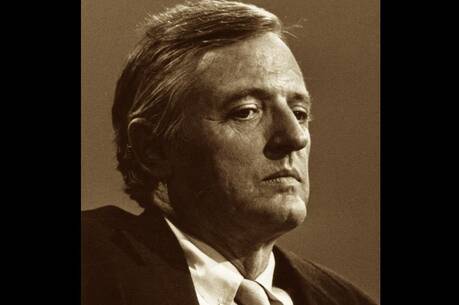A Fatal Embrace
In May 1941 Karl Adam, a priest of the Diocese of Regensburg and a noted professor of theology in Tübingen, wrote to a colleague, “I am convinced that the new political movement [National Socialism] would long ago have thoroughly enriched even church circles with its ‘You will renew the face of the earth,’ if the latter would not constantly encounter a profound anti-Christian instinct in certain proponents of the national movement.”
The history of the Catholic Church in Europe during the first half of the 20th century can certainly support this conclusion. The church and its leaders found themselves much more at home under dictatorial regimes than in pluralistic democracies. Yet this harmony was quickly shattered when the former reared its monolithic face and implemented laws that directly contradicted church doctrine and practice.
David Kertzer’s The Pope and Mussolini offers compelling evidence of this. Kertzer, the Paul Dupee university professor of social science and a professor of anthropology and Italian studies at Brown University, is well equipped to recount this particular history. He has written several significant works on the Catholic Church and the papacy, including The Kidnapping of Edgardo Mortara (1997) and The Popes Against the Jews: The Vatican’s Role in the Rise of Modern Anti-Semitism (2001).
In The Pope and Mussolini, Kertzer examines the interplay between the reigns of Achille Ratti, Pope Pius XI (1922–39) and Benito Mussolini, Italian prime minister (1922–43). Building upon the work of others, including John Pollard, Emma Fattorini and Hubert Wolf, Kertzer charts his own course not only by virtue of the depth of his archival research and analysis, but also by virtue of his engaging prose.
Pius XI and Mussolini sought to shape kingdoms that reflected their respective world views. As Kertzer writes, “The Rattis’ heroes were saints and popes; the Mussolinis’ were rabble-rousers and revolutionaries.” Aloof, ill-tempered and unpredictable, Pius XI yearned for Italy’s medieval past, in which the papacy held firm sway over the Italian city and Papal States in a steadfast effort to bring about a kingdom of God on earth. Mussolini too, dreamed of a greater Italian empire, forged by blood and bullets. Both men pursued their aspirations with ruthless conviction.
Initially, Pius and Mussolini might appear to be blatant enemies. In 1904, the future Italian dictator published God Does Not Exist and publicly called priests “black microbes, as disastrous to humanity as tuberculosis microbes.” Years later in 1921, realizing the formidable political challenges that lay ahead, Mussolini knavishly changed his tune and proclaimed that Fascism could bring about a restoration of Christian society.
These promises were enticingly seductive to Pius XI and ultimately resulted in a “Fatal Embrace,” with the church withdrawing its cards from the Popular Party, its own political faction, and placing them in the hands of Fascism in exchange for the state’s protection and promotion of Roman Catholicism. This alliance continued in the face of significant physical violence against Popular Party supporters, often, for example, involving almost comically forced dosages of castor oil. Even the Fascist murder of the socialist leader Giacomo Matteotti did not alter this alliance. Rather, it was Pius XI who remained by the Italian dictator’s side even when the world’s press condemned the murder of Matteotti and called for Mussolini’s deposition.
In 1929, the fatal embrace turned into a formal alliance with the signing of the Lateran Accords, which declared Roman Catholicism the only religion of the Italian State and made Vatican City a sovereign territory under papal rule. The sanctioning of this treaty did not mean that all was well in relations between the Vatican and Italy. At regular intervals tensions sprang up, often resulting from the incessant demands of the Vatican on the Italian government: to squelch Protestant proselytizing, to ban anti-Catholic publications and to take action against problematic ex-priests. The central concern, though, was over Catholic Action—a movement focused on restoring Catholic influence in society—and the ability of its members to operate freely. Too often, Mussolini and those around him perceived Catholic Action as too politically involved in Italian society and forbade the movement from operating altogether. In June 1931, Pius XI countered this move with the encyclical “Non Abbiamo Bisogno” in support of Catholic Action. Unlike many other historians, Kertzer argues this was not an attack on Fascism but only a momentary pause between “indispensable” allies who worked together to Christianize Italian society. Mussolini did eventually relent and permitted Catholic Action to resume its work.
According to Kertzer, the individual who worked hardest to ensure good relations between Mussolini and the Vatican was Pietro Tacchi Venturi, a Jesuit academic, likened by German newspapers to Rasputin. Venturi was convinced there was a Jewish-Masonic plot working to dominate and deChristianize European society. Venturi was joined by his superior general, Włodzimierz Ledóchowski, an ardent anti-Semite. While Ledóchowski’s anti-Semitism veered toward the extreme, the majority of Vatican churchmen rejected racial anti-Semitism, especially that espoused by Germany’s National Socialists. But this in no way made them overtly supportive of Jews. Rather, most were ready to embrace legislation that limited Jews’ civil rights and participation in public life. Thus when the Italian Manifesto of Racial Scientists was issued in July 1938, there was little opposition from church leaders. The major concern voiced publicly was that the Italian anti-Jewish laws should avoid excessive emphasis on blood as the basis of Jewish identity; that would diminish the efficacy of the sacrament of baptism for Jews who had been baptized. This latter point soon moved to the fore, especially as Italian Fascism appeared to be appropriating attributes of National Socialism, which were extremely hostile to the church.
Even though these concerns over racial anti-Semitism remained, protection of the church and its interests took top priority. Again, at the fore was Catholic Action. Kertzer purports that in August 1938 Venturi and Mussolini worked out a deal whereby Catholic Action would be allowed to function in exchange for the Vatican’s agreement not to oppose the Italian racial laws. Though Pius XI dreamed of an Italian-Catholic kingdom, toward the end of his pontificate he became less willing to negotiate for it as Italy grew ever closer to Germany. The persecution of the church in Germany was too blatant and harsh for the pope to ignore. In turn, Pius XI became ever more critical in his public statements of German-Italian rapprochement and racial anti-Semitism. Yet, his words still betrayed a clear anti-Jewish bias.
In all this, however, Kertzer still places the brunt of questionable behavior upon Eugenio Pacelli, the Vatican secretary of state from 1930 to 1939, along with Venturi and Ledóchowski, who together worked expeditiously against the wishes of an ailing Pius XI. And although the book does not focus primarily on Pacelli, but on Pius XI and Mussolini, Pacelli is nevertheless present as an ominous secondary figure, though not completely fleshed out in the book’s narrative.
Like other recent works, Kertzer’s study of Italy confirms that the Catholic Church worked too readily to adjust itself to Europe’s authoritarian dictatorships in exchange for protection of its salvific mission. Pius XI desperately yearned for a Christianized Europe—one free of the influence of non-Catholics, especially Jews. He was not unlike many Catholics of his time, who aggressively fought against what they perceived as the ills of modernity and pluralism. Though Pius XI recognized the evils of racial anti-Semitism, unfortunately he did not live long enough to offer a significant challenge to it. Nor was his final address, composed but undelivered, an unconditional condemnation of antisemitism and of the authoritarian regimes that promoted it. Instead, the church must now live with a legacy of appeasement, accommodation and silence.
This article also appeared in print, under the headline “A Fatal Embrace,” in the March 31, 2014, issue.








